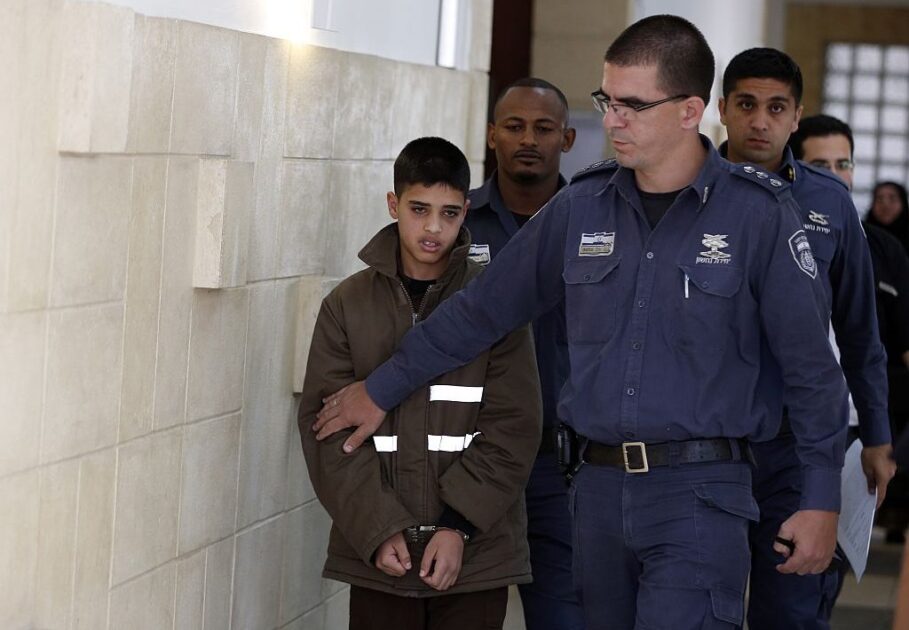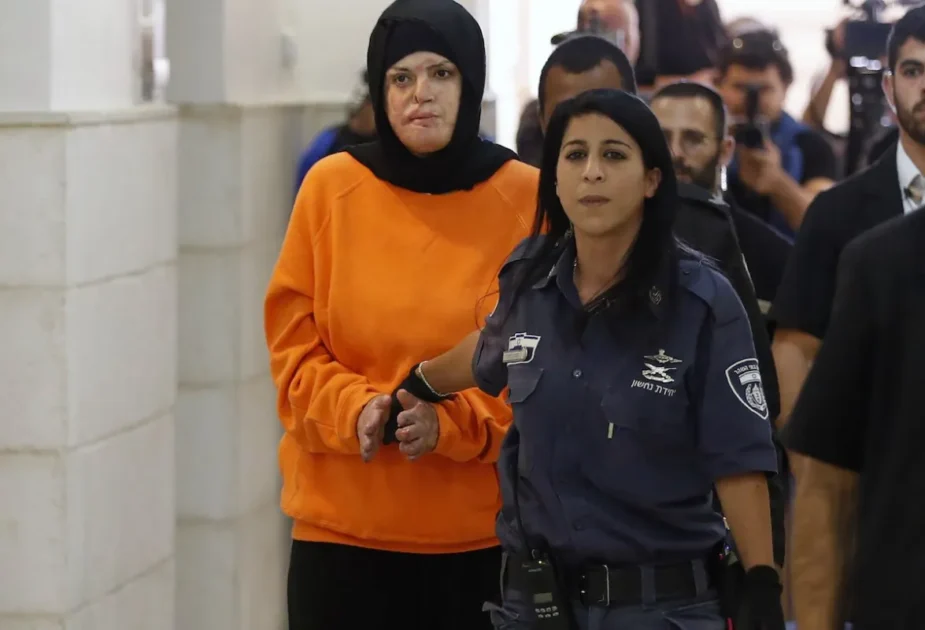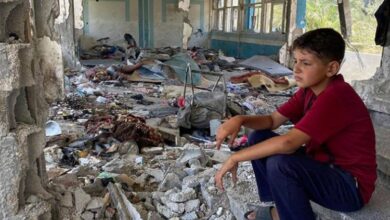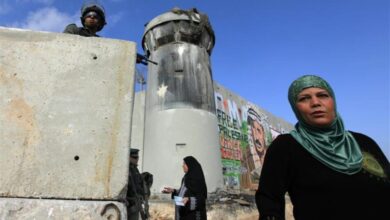The Palestinian Prisoners’ Movement: Struggles in Israeli Prisons
A look inside the lives, resistance, and resilience of Palestinian detainees under Israeli occupation

The Palestinian Prisoners’ Movement stands as a powerful symbol of resilience and resistance. It reflects the struggles of Palestinian prisoners in Israeli jails and the larger Palestinian fight for freedom and dignity. Since the beginning of the occupation, these prisoners have faced harsh conditions without the protection of international laws meant to safeguard their rights. The brutal treatment endured by Palestinian prisoners has made the movement a clear symbol of resistance and steadfastness.
From its inception, the Prisoners’ Movement has played a central role in strengthening Palestinian unity and raising national awareness. This resistance goes beyond surviving difficult conditions; it has developed into a conscious movement that organizes prisoners and defends their rights. Prisoners within Israeli jails have not only withstood oppression but have turned prison cells into spaces for educating others on Palestinian identity, fostering a strong sense of community and national pride.
As international pressure on Israel increases and human rights organizations focus on the situation of Palestinian prisoners, the Prisoners’ Movement highlights the ongoing violations of prisoners’ rights and the importance of enforcing international laws that protect them. Despite these efforts, Israeli policies towards Palestinian prisoners remain harsh, aiming to weaken their influence and morale within Palestinian society.
The Palestinian Prisoners’ Movement: Concept and History
The Palestinian Prisoners’ Movement is a powerful resistance movement led by Palestinian prisoners held in Israeli jails. The Palestinian Prisoners’ Movement began under British rule in 1917 and continued through Israel’s occupation in 1948 and the takeover of the West Bank and Gaza in 1967. This movement fights for prisoners’ rights, seeking to improve their harsh living conditions and address mistreatment through organized actions like hunger strikes and protests.
The roots of The Palestinian Prisoners’ Movement date back to British rule, where Palestinian fighters were imprisoned and executed in places like Akka Prison. The modern phase of the movement started after 1967, when Israel’s occupation led to the imprisonment of thousands of Palestinians for political reasons. These arrests built a strong sense of unity and awareness among prisoners about the need to advocate for better treatment. Over time, Palestinian prisoners developed peaceful, organized strategies, which fostered unity and resilience, creating a collective front against Israeli prison policies.
From the start, Israel had no clear policies for dealing with Palestinian prisoners and relied on British emergency laws from 1945, using harsh interrogation methods. Israeli authorities imposed poor conditions on prisoners, denying basic human needs like medical care, food, and adequate clothing, in violation of international agreements on the treatment of detainees.
As political situations shifted, The Palestinian Prisoners’ Movement evolved into an educational force, preparing prisoners for leadership roles. During the Second Intifada, which began on September 28, 2000, Israel significantly increased arrests, targeting Palestinians across cities and villages, which caused the number of prisoners to rise sharply. Since then, Israel has labeled these detainees as “security prisoners,” restricting their freedoms and branding them as terrorists due to their resistance efforts.
Prisoners’ Struggles
The Palestinian Prisoners’ Movement has not come without sacrifice. Many prisoners have lost their lives, and others have faced various forms of oppression, including solitary confinement, deprivation, and additional trials, all in an attempt to crush their resistance. However, these actions only strengthened the prisoners’ determination to fight for their rights and freedom.
With administrative detentions on the rise, today thousands of prisoners are held without formal charges under the guise of a “security threat.” These administrative detentions are ordered by military command and typically last six months, renewable as needed. Since October 7, over 7,500 such orders have been issued, including cases involving children and women.
Article 78 of the Fourth Geneva Convention states, “If the Occupying Power considers it necessary, for imperative reasons of security, to take safety measures concerning protected persons, it may at most subject them to assigned residence or internment.” However, Israel’s routine use of administrative detention defies international standards for fair trials. Administrative detention is meant as a last-resort measure only in emergency situations, yet Israel relies on this practice regularly.
According to the Prisoners’ Affairs Commission, the number of Palestinian prisoners in Israeli jails has surpassed 10,100 as of October 2024. These prisoners suffer from various forms of abuse, such as electric shocks and beatings, according to Palestinian sources. The prisoners hardly receive adequate food or rest, enduring frequent humiliating searches at night where guards unleash dogs and throw stun grenades to disrupt their peace.
Children have not been exempt from these practices, despite Israeli law prohibiting the detention of children under 14. Instead, they are typically placed under house arrest or fined. However, in the case of 13-year-old Ahmed Manasra, detained in 2015, Israeli law was amended to allow the imprisonment of minors for crimes such as murder or attempted murder.
Ahmed was subjected to harsh treatment from the moment of his arrest, experiencing violent interrogations aimed at forcing confessions. Throughout his ordeal, he continually responded, “I don’t remember.” Since then, he has been serving a 12-year sentence in harsh conditions. During one court session, his mother attempted to touch his hand for the first time since his detention, but the judge denied her request, intensifying the family’s pain.

The suffering of prisoners is not limited to children; many Palestinian women also endure severe abuse. One prominent example is Israa Jaabis, who was arrested on October 11, 2015. She was badly burned in an accident when Israeli forces fired at her car, causing a gas canister to explode. Israa suffered burns covering 50% to 60% of her body, losing all her fingers and sustaining facial disfigurement. Despite her dire need for medical care, she was charged with attempting to kill a soldier, sentenced to 11 years, and denied treatment, despite needing multiple surgeries and being deprived of essential medication.
Despite these hardships, Israa continues to resist. She found a way to persevere by focusing on her education while imprisoned, completing her high school diploma with a 70% average despite threats from prison authorities to confiscate her study materials. She later enrolled in Al-Quds Open University and earned a Bachelor’s degree in Social Work in 2020. Her resilience inspired other female prisoners, who joined her in academic achievements despite their harsh conditions.

The Palestinian Prisoners’ Movement views Israel’s actions as “inhumane and immoral violations.” Attempts to break the prisoners’ spirit have not ceased, and the movement continues to resist these efforts. Notably, in 2018, Israeli Minister Gilad Erdan formed a committee to find ways to strip Palestinian prisoners of their rights, arguing that “those who attack Israel should pay the price or remain in prison under conditions equal to those of criminal detainees.
The Erdan Committee’s recommendations included ending the grouping of prisoners by organizational affiliation, abolishing the “prison representative” role for resolving individual conflicts, banning prisoners from cooking in their quarters, reducing water usage, and implementing other measures to erode the hard-won rights prisoners have secured through decades of struggle.
Protests and Resistance in Prisons
Forms of Resistance Adopted by Prisoners
Palestinian prisoners employ various forms of resistance to challenge their oppressive conditions and assert their rights. This resistance often manifests in organized protests, peaceful demonstrations, and the refusal to comply with unjust regulations imposed by prison authorities. Such acts are aimed at raising awareness of their plight and advocating for improved living conditions within the prisons.
Hanger Strike
Due to the harsh living conditions and torture endured by prisoners, they resort to forms of resistance and struggle to improve their circumstances, most notably through hunger strikes. These strikes have become a fixed part of prison life, as prisoners prefer to risk their lives by refusing food rather than accept the brutal treatment they face, including solitary confinement, humiliating strip searches, sleep deprivation, and beatings.
Hunger strikes have a long tradition in nonviolent resistance movements. Mahatma Gandhi famously used this method to protest against British rule in India, illustrating that it has been a peaceful tactic throughout history. The success of a hunger strike relies on three main factors: media attention, public support, and the determination of the strikers. This form of protest poses significant risks, often impacting the individual’s life to the point of mortality.
The process begins when a person stops eating, leading to rapid health deterioration. After two weeks without food, the body starts to break down tissues to survive; after two months, the risk of death from heart failure increases. Despite these dangers, Palestinian prisoners remain committed to resistance through hunger strikes, a key aspect of the Palestinian Prisoners’ Movement. Since the onset of Israeli occupation, Palestinian prisoners have engaged in numerous hunger strikes, achieving their basic demands in some instances. However, their victories are often temporary, as the policies of administrative detention and arbitrary arrests continue in the occupied Palestinian territories, prompting prisoners to plan further hunger strikes in the future.
Education and Awareness
Many Palestinian prisoners seek knowledge through self-education and do not waste their time. They study academic subjects and exchange information with each other, which strengthens their resilience. Some of them have even enrolled in the Open Hebrew University, which allows those with long sentences to participate.
Establishing an education system in prisons has been one of the foundations upon which Palestinian prisoners base their strategy to counter oppressive orders. Prisoners from various factions cooperate to maintain and deliver a comprehensive program, enriching their ideological understanding and promoting the development of their respective factions.
Despite this, prisoners face cultural restrictions, as they are denied access to pens, notebooks, and books. They are forced to listen to Israeli radio at specific times and are only allowed to read the news from the “Al-Anba” newspaper published by Israeli intelligence services. Any prisoner caught with a pen or paper is punished with solitary confinement. One of the most dangerous methods is the policy of cultural and intellectual deprivation, which promotes vacuous cultural books within the prisons.
the Palestinian Prisoners’ Movement stands as a testament to the resilience and determination of those enduring the hardships of incarceration under occupation. Through various forms of resistance, including hunger strikes, educational pursuits, and solidarity among prisoners, they continue to challenge the inhumane treatment and systemic injustices they face.
The struggle for better conditions, rights, and recognition is not just a fight for personal freedom but a collective effort that reflects the broader quest for justice and dignity among all Palestinians. As the plight of these prisoners remains a focal point of the Palestinian cause, it is crucial for the international community to recognize their struggles and advocate for their rights. Ultimately, the stories of these brave individuals serve as a powerful reminder of the ongoing fight for freedom and human rights, inspiring solidarity and support for the Palestinian Prisoners’ Movement across the globe.




